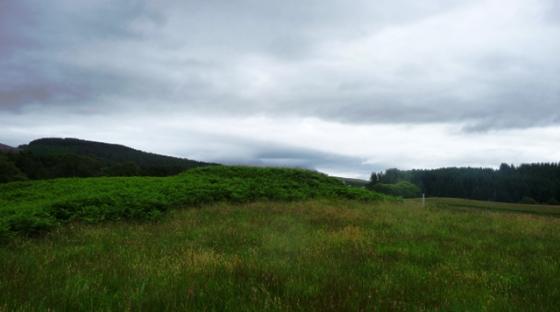
29/12/2018 – December on Craig Phadrig hillfort. A different feel to Gladman’s wonderful bluebell photos of the hillfort already posted.

29/12/2018 – December on Craig Phadrig hillfort. A different feel to Gladman’s wonderful bluebell photos of the hillfort already posted.

29/12/2018 – Fine view out to the Beauly Firth from Craig Phadrig hillfort.


Yeah, hefty defences, these. In retrospect I’ve no idea what the red anomaly is to right.

According to a local man..... this view of the Beauly Firth has only been available for a few years.

In the words of that great philosopher George O’Dowd: “War is stupid; And people are stupid; So let us instead have the blue bell upon vitrified forts!” OK, perhaps not the last bit... but flowers upon these massive ramparts are indeed a nice touch.





And to think that subsumed within such natural beauty is a massive, brutally utilitarian stone rampart?


Tree-covered Craig Phadrig, centre skyline, seen from the SSE.
Some ancient forts, mostly from the Iron Age, had ramparts constructed from a double wall of stone with layers of wood and rubble sandwiched between. If the timber were set on fire as it might during an enemy attack, certain types of stone melted and fused other stones together. The great lumps of of heated, cooled, and solidified rock have patches that glitter like glass, giving rise to the term ‘vitrified’ forts.
Folklorists used to speculate that these were the origin of the glass castles of tradition. David MacRitchie, in 1891, wrote:
when one hears some wild story of a dreaded giant or ogre living in a castle surrounded with glass‘,
one knows, that such a castle could not have existed, but that the real glass castles may have been vitrified forts. He cites the example of a famous glass castle said to stand on Tor Inis or Tory Island off the north coast of Ireland, but as castles of glass often appear in fairy tales in places where no vitrified forts exist, this seems no longer a workable proposition, however tempting such a rationalisation may appear.
Craig Phadrig, a wooded hill west of Inverness, is crowned by a vitrified fort. Radio-carbon dating suggests that its ramparts were originally built in the fifth or fourth century BCE, although they may have been strengthened around 500-600CE. It has been proposed that Bridei or Brude, King Of Picts (c.555-84), lived here, as it is recorded that he had a royal palace near the River Ness. There is a King Brude Road on the way here from Inverness.
Brude was visited by St. Columba, who wanted permission to continue his work of Christian conversion, but the saint and his companions were refused entry. Then says Columba’s biographer Adomnan (627-704), Columba made the sign of the cross on the great doors, knocked and laid his hands on them and immediately the bolts shot back of their own accord. Brude is supposed to have been converted by this miracle, and he and his retinue in the fort were all baptised.
A local tradition said that this baptism took place at the foot of a fir tree growing at the centre of the fort. In 1963, Otta Swire noted:
This tree was still growing, one of the finest and largest Scotch firs that I ever saw, when Craig Phadrig was sold to the Forestry Commission in the 1920’s and much strong feeling was aroused by their decision to fell it as part of a clearance scheme.
The Lore Of Scotland – A Guide To Scottish Legends
Westwood and Kingshill
Extensive description of the fort on Canmore.






























































































































































